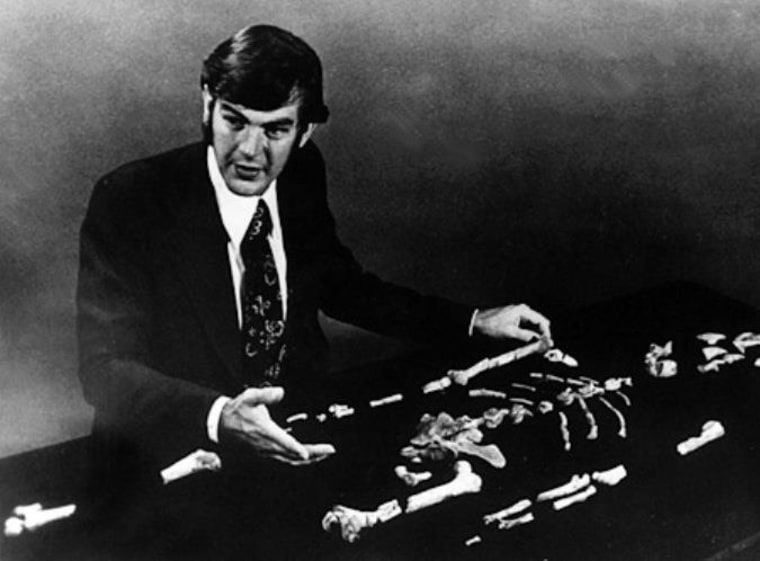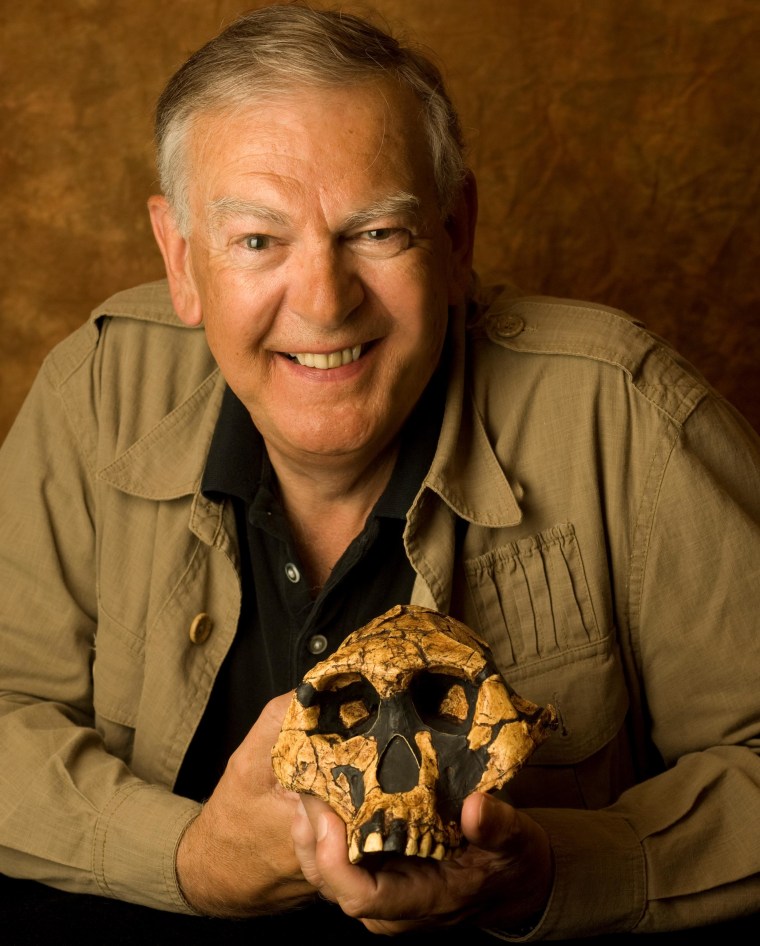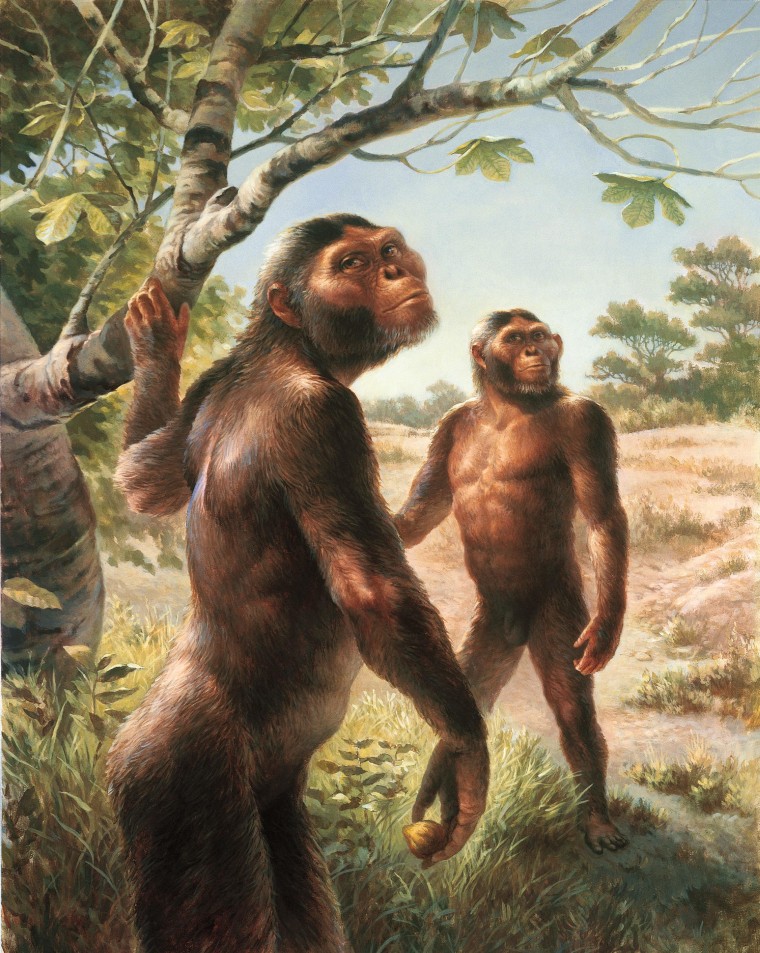COLUMBUS, Ohio — It's been 40 years since paleoanthropologist Don Johanson found the first piece of one of the world's most famous skeletons, a 3.2 million-year-old human ancestor nicknamed Lucy. During those four decades, Johanson and his peers have rewritten the story of our species' origins. And they're not finished yet.
"There are at least three species that people are chewing on, that you will hear about soon," Johanson said during a science conference in Columbus last month. "It's going to get more crowded."
Lucy still stands out in the crowd, however. Her species, Australopithecus afarensis, represents a key turning point in the story of human evolution: Lucy's brain was just a little bigger than that of a modern-day chimpanzee, but the structure of her skeleton clearly shows she walked upright.
"Obviously, Lucy occupies this pivotal place on the family tree," Johanson said.
But what happened after Lucy? What was it that caused our particular branch of the family tree to blossom, while others withered away? "That's one of the great mysteries that we're hoping to address in coming years," Johanson said.
Magical mystery tour
Johanson has been dealing with great mysteries since Nov. 24, 1974, the day he came across that little piece of elbow bone in a gully near Hadar, a village in Ethiopia's Afar region. He was part of a team hunting for fossils of ancient hominids, and acting on a hunch, Johanson and graduate student Tom Gray decided to walk through the gully even though it had been checked before.
"I am always looking at the ground," Johanson said. "I find more quarters by parking meters than anybody I know."
He immediately recognized that the bone fragment was something speclal. "A year before the discovery, a geologist had left his footprints 4 or 5 feet away from the skeleton, because he was looking for rocks. I was looking for bones," Johanson recalled.

Searchers spotted more bones nearby, and that evening they threw a party to celebrate — with a recording of the Beatles' "Lucy in the Sky With Diamonds" playing as the soundtrack. Over the next few weeks, Johanson and his colleagues unearthed several hundred fragments of the skeleton, which they nicknamed Lucy.
The fact that Lucy's skeleton was 40 percent complete (excluding the many tiny bones of the hands and feet), plus the never-before-seen blend of ape and human characteristics, made Lucy famous. And Lucy made Johanson famous.
After a years-long U.S. tour, Lucy's bones are being held secure inside an Ethiopian museum. Meanwhile, Johanson went on to found the Institute of Human Origins and has made Arizona State University his home base for teaching and research.
"Somebody was asking me what's the big difference, 40 years later, between me and Lucy — and I say it's very simple," Johanson said. "When I look in the mirror, I know I'm 40 years older. Lucy doesn't look a day older."
Life after Lucy
Johanson has told and retold the story of Lucy in books and interviews, but even after 3.2 million years, that story isn't over: Now he's focusing on how and why species like Australopithecus afarensis made the transition to species like Homo erectus and Homo habilis, and then onward to Neanderthals and modern humans.
He couldn't discuss all the details in Columbus, because some of the findings still have to be reviewed, but Johanson sketched out his scenario for life after Lucy in East Africa: Scientists have long known that the regional climate turned drier in the epoch that came after Lucy's heyday. That transformed a closed, forested environment into a more open environment dominated by grassland.
"One group — the 'robusts,' the ones with the big teeth and the big jaws — made adaptations that were dietary," Johanson said. They switched from a fruit-rich diet to a menu featuring grasses, roots and seeds. Meanwhile, another group went "in a totally different evolutionary direction."

"What was it that stimulated the arrival of our own genus, Homo? That focused on brain expansion, that focused on tool use, and focused on the inclusion of a high-energy source of food to nourish a very hungry brain: meat," Johanson said.
The implication is that, 3 million years ago, climate change in Africa pushed one group of hominids toward what turned out to be a dietary dead end, while the other group took the path toward becoming human.
"I think we're going to see some very exciting discoveries," Johanson said. "I know that, I can't tell you that. I know that over the next couple of years you're going to be quite surprised."
The big question
In September, the Institute of Human Origins received a $4.9 million boost in September from the Templeton Foundation, which funds initiatives that focus on "big questions" ranging from cosmology to spirituality.
Templeton's support for projects with a religious twist has drawn criticism from some scientists — but Johanson points out that the foundation's board of advisers include respected researchers who steer far clear of religion, such as paleoanthropologist Ian Tattersall.
The way Johanson sees it, the nature of humanness is one of the biggest questions there is — not just for our past, but for our future as well.
"I'm convinced that understanding our evolutionary journey is going to play a role in our future, our future survival as well as the survival of all creatures on this planet," he said. "We know we have a united past, we know that we are the same species, we know we have inherited the same capabilities. And I think hopefully this is going to lead to a world in which we're more responsible to the natural world — the natural world that ultimately was our creator on this planet. ...
"I think it's time for this species, the most powerful, the most destructive and at the same time the most creative species on planet Earth — Homo sapiens — to stop acting as if there was some other place for us to move to."
Johanson spoke at the New Horizons in Science briefing in Columbus, part of the ScienceWriters 2014 conference. The briefing was presented by the Council for the Advancement of Science Writing in cooperation with the National Association of Science Writers and the Ohio State University. NBC News science editor Alan Boyle is the current president of CASW.
For more about the 40th anniversary, check out the Institute of Human Origins' website and BecomingHuman.org. You can also watch PBS' two-part series on human origins, titled "Becoming Human."
